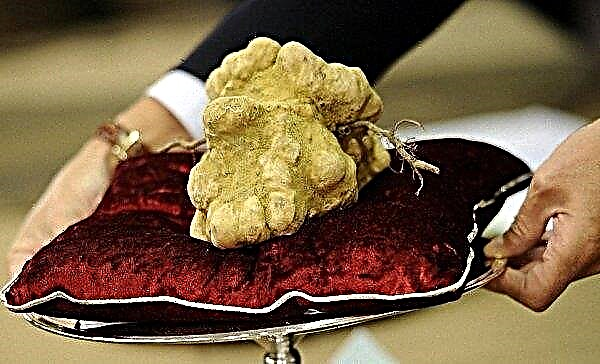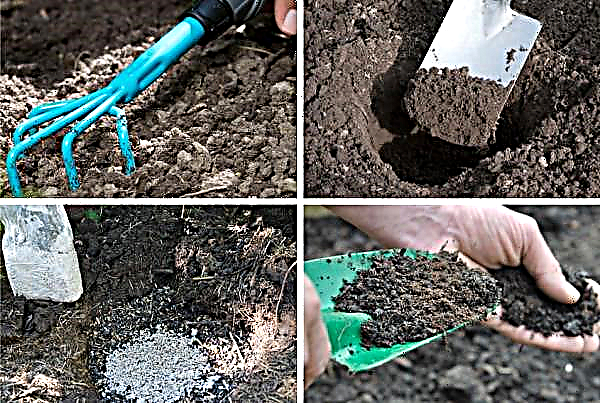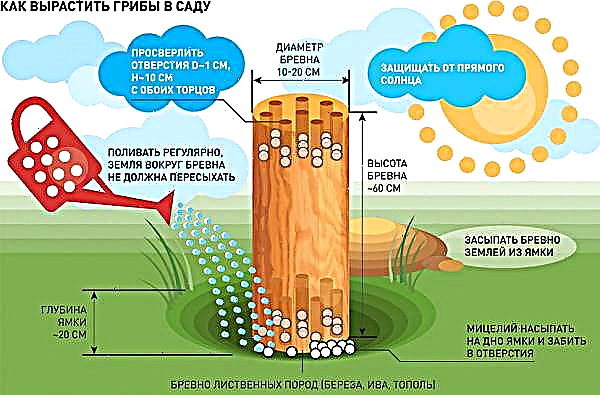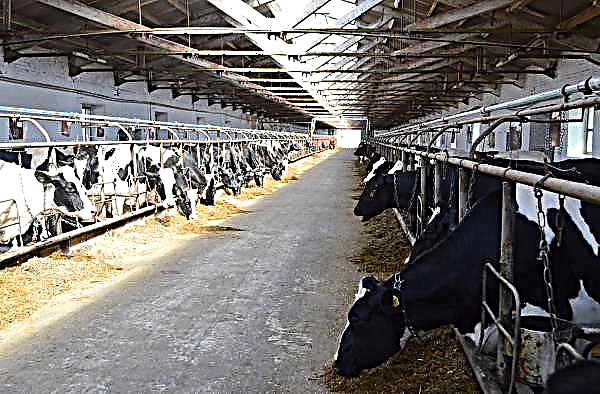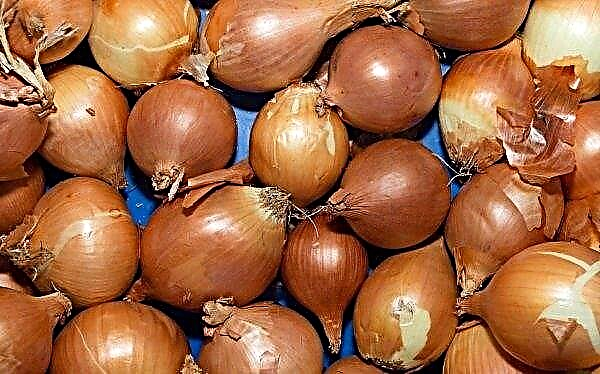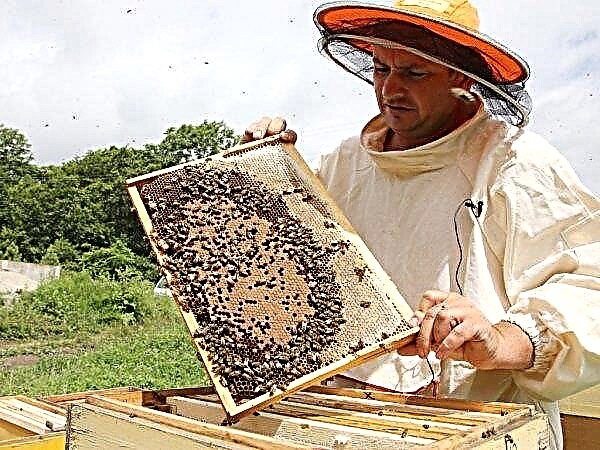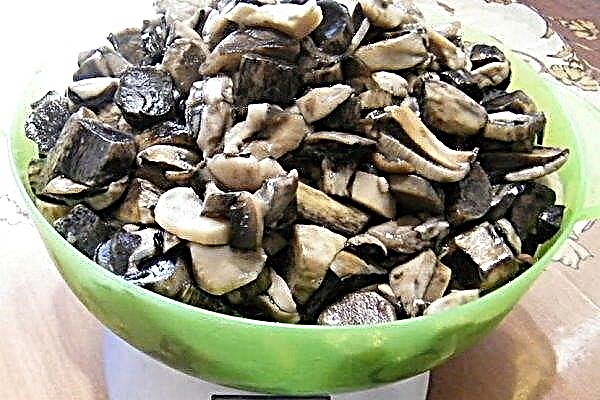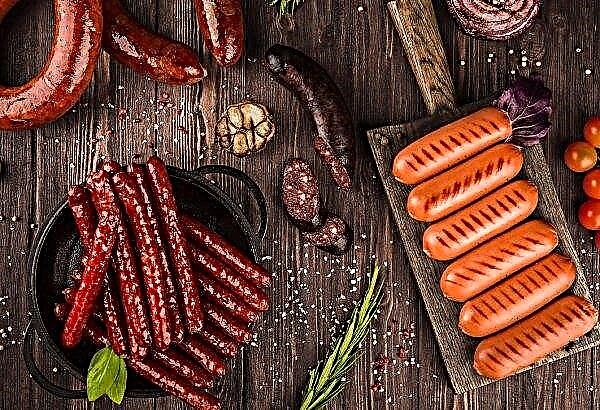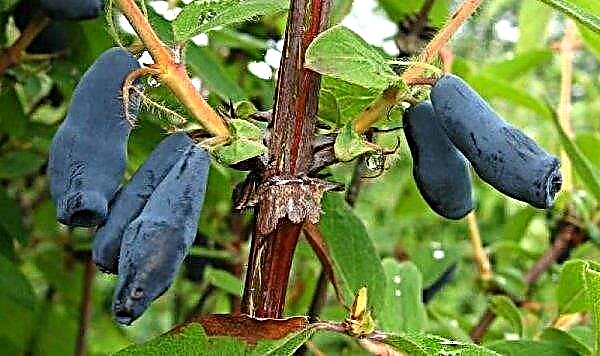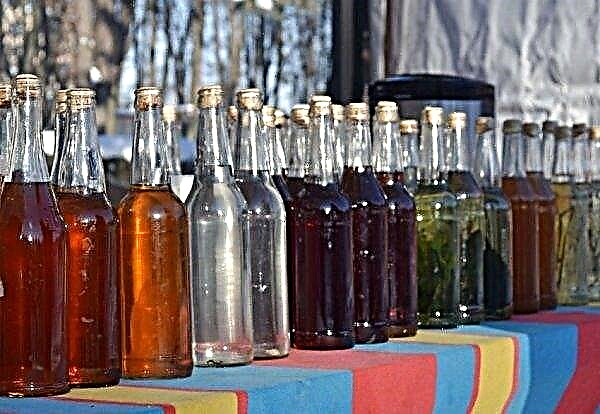If the farmer wants to grow onions on the plot with good taste and many positive characteristics, one of the best options for him is the Setton variety. However, along with a good harvest of the gardener, a mandatory care of the crop is waiting. How to plant a Setton variety and how to grow it successfully, read on in the article.
Description and characteristics of the variety Setton
Bow Setton was developed by the Dutch breeders. The variety was originally intended for cultivation in northern Europe. Since 2015, in the Russian Federation, Setton has been zoned in the central part of the country.
Did you know? Onions as a food product was known to the ancient Egyptians. The image of a vegetable is found on one of the pyramids.
Bulbs and feathers in the composition have many useful substances. Separately, plant experts isolate phytoncides - natural components that can destroy an infection even at the stage of its entry into the body.
The appearance and size of the onion
Turnips and seeds are characterized by a uniform ellipsoid shape with a middle neck. Scales are golden yellow. The weight of one onion is 100–120 g. The product is slightly edgy to taste. Feathers grow to 45 cm.
Ripening dates and productivity
Variety Setton refers to mid-season. Harvest ripens in 100-110 days from the appearance of the first sprouts. Germination reaches 90-100%. From 1 m² of plantations, farmers collect an average of 6 kg of vegetables.

Pros and cons
- The variety has many positive qualities. Among them:
- resistance to shooting;
- cold resistance;
- immunity to many diseases;
- almost maximum aging;
- keeping sevka;
- good presentation
The disadvantage is the mandatory observance of growing technology and the need for disease prevention. Also, Setton northeast can be expensive, which should be considered when planning sowing.
Features of Onion Growing Setton
Onion Setton can be grown in a greenhouse or in an open area. Sowing is carried out in the spring when the air temperature warms up to + 12 ° C. However, it is not enough to comply with the landing dates - it is important to choose the right site, prepare the planting material and sow seeds according to the correct technology.

Preparatory work before landing
Before planting the material, it is necessary to do preparatory work. Two main factors that you should pay attention to before planting onions are the choice of site and the preparation of planting material.
Seat selection
Onion grows well in loose substrate. Sandstones or loams are preferred. The optimum acidity of the soil is pH 6.5–7. Pay attention to crop rotation. The culture grows well in the area where tomatoes, potatoes, cabbage, cucumbers used to grow. Agronomists call carrots and garlic the bad predecessors for onions. In autumn, the site should be dug up and weeded. For top dressing, compost is added to the substrate at the rate of 5 kg per 1 m² of soil.
Pay attention to crop rotation. The culture grows well in the area where tomatoes, potatoes, cabbage, cucumbers used to grow. Agronomists call carrots and garlic the bad predecessors for onions. In autumn, the site should be dug up and weeded. For top dressing, compost is added to the substrate at the rate of 5 kg per 1 m² of soil.
Seed preparation
Before planting, seeds must be prepared. Carry out the preparation in several stages:

- Dry and warm the planting material at a temperature of + 20 ° C for 14 days before planting.
- A day before disembarkation, put sevc in conditions of + 40 ° С.
- Treat the bulbs with a weak solution of potassium permanganate 1% solution of copper sulfate.
Important! Do not plant seeds with plaque or rot. Such damage indicates an infectious infection.
Disembarkation technology
To ensure maximum germination, plant onions strictly according to the following technology:
- Smooth the rake landing area.
- Mark the ridges at a distance of 20-30 cm from each other.
- Plant seeds to a depth of 4 cm, maintaining a distance of 10 cm between planting material.
- Sprinkle ridges with soil.
- Water the plantings.

Onion Care
Setton's advantage is almost one hundred percent maturation. Such results can be achieved only with competent cultivation. The list of care measures includes watering, top dressing, cultivation, weeding and disease prevention.
Watering and fertilizing
In the period after planting and until early July, plantations are watered with a frequency of 1 time per week. Up to 10 liters of water are needed per 1 m² of land. Starting from the first days of July, watering is carried out less frequently, approximately once every 1.5–2 weeks, and only if there is no rain. 2-3 weeks before harvesting, soil moisture is completely stopped.
It is advisable to add top dressing three times during the entire growing season:
- 14 days after disembarkation - pour 1 kg of mullein in 10 liters of water, leave for a week, dilute 1 part of the infusion with 5 parts of water before use;
- 14 days after the first feeding - a solution of the drug "Agricola-2", prepared at the rate of 1 tbsp. l concentrate on a bucket of water;
- at the time of turnip formation - a solution of 2 tbsp. superphosphate and 10 l of water.
Important! Do not exceed the indicated doses when applying top dressing. Excessive feeding harms the crop.
Loosening the soil and weeding from weeds
Loosening is an important measure when growing onions. Loose soil better passes air to the turnip. Also, loosening helps to retain moisture. This is necessary for better development of the vegetable. The procedure is carried out between rows 1-2 times a week.
 Weeds are removed as they appear. The ridges are conveniently weaved along with loosening.
Weeds are removed as they appear. The ridges are conveniently weaved along with loosening.
Plant pests and diseases
Setton can be infected with dangerous diseases, including:
The causative agents of these diseases are fungal microorganisms. For treatment, use fungicides, such as Quadris or Ridomil Gold.
An attack of pests — onion flies and nematodes — is also possible. With parasites, you can cope with timely treatment.
| Pest | Treatment |
| Onion fly | Treat the planting with a solution of 1 liter of water and 30 g of salt. You can apply no more than 3 times with a break per month. |
| Nematode | Remove the affected bulbs, treat healthy specimens with Carbathion at a rate of 200 ml per 1 m². |
To avoid diseases and parasite attacks, it is better to think about prevention in advance. Among the main methods of struggle, agronomists call the following:
- treatment of planting material with fungicides, for example, Quadrice;
- prophylactic treatment of feathers with a solution of copper sulfate (0.5 tbsp. concentrate per bucket of water), when the greens grow to 15-17 cm;
- implementation of crop rotation rules;
- timely loosening and weeding.
Did you know? Europeans from the Middle Ages greatly appreciated onions. One captured Saracen could be exchanged for 8 bulbs.
Harvesting and storage
Harvest ripens by the end of July. Turnip after digging is left on the beds for drying. It is recommended to store the crop in a ventilated room with a humidity of 73–75% and a temperature of 0 ... + 4 ° C. Under such conditions, vegetables will be stored for up to 8 months.
Variety Setton gives almost one hundred percent germination - that is why he earned popularity among gardeners. However, the culture should be regularly looked after. Otherwise, diseases and growth disorders will let you know about yourself. Avoiding problems will only help the implementation of agricultural standards. Responsible farmer as a result will receive a tasty and healthy crop.

